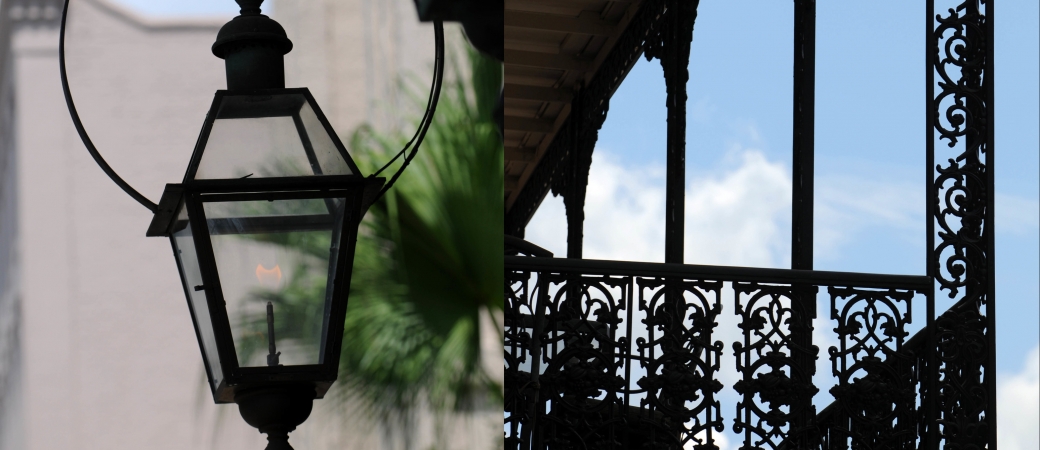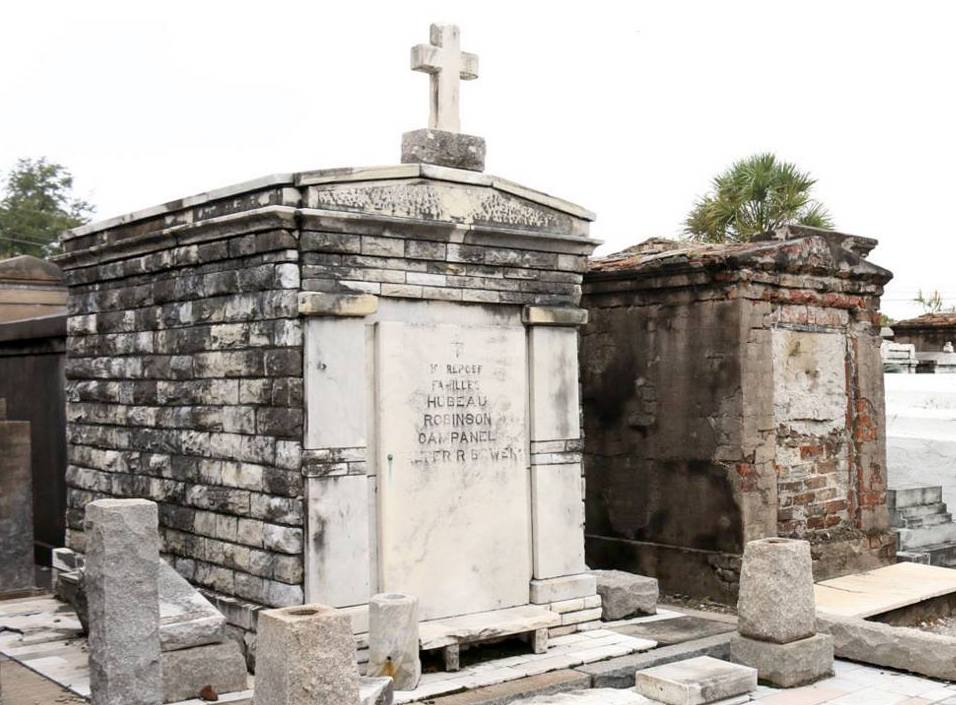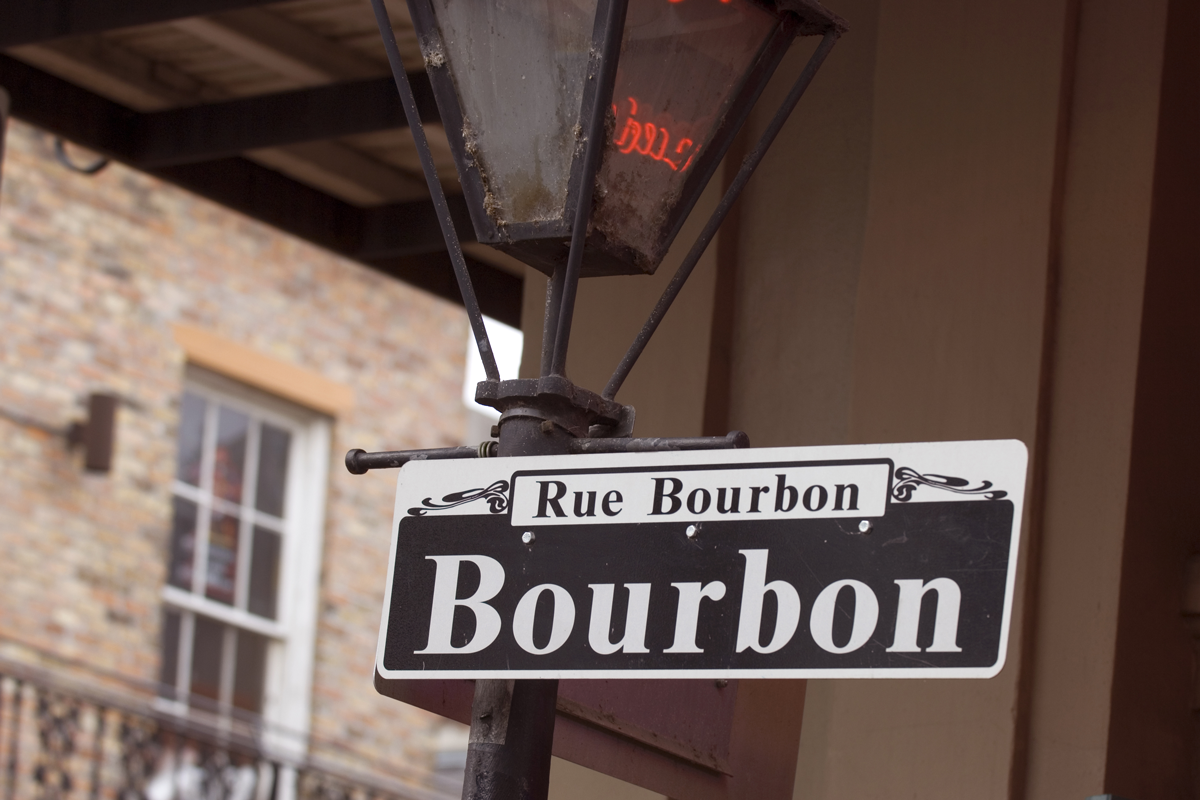The Neighborhoods Next to the French Quarter

By some counts, there are as many as 73 neighborhoods in New Orleans. They are divided by the lakes, bayous, and the Mississippi River; by the railroad and streetcar tracks; and, sometimes, by arbitrary geographical boundaries. In modern times, the unofficial geography of “By the Lake” and “Little Palermo” of the 19th century got more defined, and towns like Lafayette and Carrollton got incorporated into the city of New Orleans.
The city is a culturally rich tapestry of its neighborhoods, with some of the oldest ones clustered around the French Quarter. They make up the core part of what makes the city unique and draw visitors to its architecture, history, food, and magic. New Orleans remains on the list of the most visited cities in the U.S., receiving millions of visitors annually, who spend billions of dollars here.
Here’s a quick snapshot of the three neighborhoods adjacent to the French Quarter, and what to see, do, and eat there.
CBD/Warehouse District
Boundaries
The City Planning Commission defined the CBD as a 1.18 sq. mi. area bound by Iberville, Decatur and Canal Streets to the north; the Mississippi River to the east; the New Orleans Morial Convention Center, Julia and Magazine Streets, and the Pontchartrain Expressway to the south; and South Claiborne Avenue, Cleveland Street, and South and North Derbigny Streets to the west.
History
The Central Business District (CBD) was once the plantation of Jean Baptiste LeMoyne de Bienville, founder of New Orleans. The land changed hands until Bertrand Gravier subdivided the plantation after the fire of 1788, and named the subdivision Faubourg St. Marie after his deceased wife. After the 1803 Louisiana Purchase, the area experienced an influx of Americans, who built brick townhouses and Protestant churches.
What it’s like today
The modern CBD is a long departure from its 18th-century, largely residential ancestor. It’s now home to many office high-rises, restaurants, boutique hotels, retail stores, and lots of historic commercial and residential buildings.
What to see and do
The area contains the South Market District, an upscale shopping destination, and Orpheum, Joy, and Saenger theaters. The area around Canal Street, which borders the French Quarter, is home to numerous retail stores and restaurants, as well as the Audubon Aquarium of the Americas, the Insectarium, and the Harrah’s casino.
Clusters of art galleries on Julia Street known as the Warehouse/Arts District, host openings on the first Saturday of the month and special annual events like White Linen Night. There’s also much to see at the Contemporary Arts Center, the World War II Museum, and the Ogden Museum of Southern Art. The Superdome, the Ernest Morial Convention Center, and the Outlet Collection at the Riverwalk are all located in the CBD.
Get a taste of how Mardi Gras is done by touring Mardi Gras World, find a statue of the Confederacy of Dunces hero Ignatius J. Reilly at the site of the now-closed D.H. Holmes department store on the 800 block of Canal St., or simply walk the trendy Warehouse District, restored to its former industrial glory — to get the feel of what was the “American Sector” of the city.
CBD is remarkably easy to access from other areas of the city too: Cross Canal Street, and you’re in the French Quarter. Several streetcar lines can take you to Mid-City, Marigny, and Uptown. If you walk to the river, you can take a ferry to Algiers on the West Bank.
Where to eat, drink and hear music
The culinary destination hits keep coming, especially in the Warehouse District, so there’s no shortage of innovative restaurants to choose from. Donald Link’s Cajun-Southern Cochon on Tchoupitoulas Street has some of the best pork ribs in the city.
The curried goat by chef Nina Compton at Compere Lapin is divine and draws from the Caribbean culinary influences of the chef’s native St. Lucia. Herbsaint is always a good choice for the upscale-French dining experience, and Domenica has some of the best pizza in the country.
The nightlife in the CBD is best represented by Republic NOLA, a music venue and nightclub in a former warehouse space. The Howlin’ Wolf, located on S. Peters Street in the old New Orleans Music Hall, is also a must-stop.
Treme
Boundaries
The 442-acre Treme is defined by Esplanade Avenue to the east, North Rampart Street to the south, St. Louis Street to the west, and North Broad Street to the north.
History
It’s one of the oldest neighborhoods in the city, settled in the late 18th century and heavily populated by Creoles and free people of color. The area was named after Claude Treme, a French hatmaker and real estate developer who migrated from Burgundy in 1783.
What it’s like today
Treme is known for its music clubs and soul food spots (some double as both), Creole architecture, and cultural centers celebrating the neighborhood’s African-American and Creole heritage. It’s a vibrant, diverse neighborhood, home of many a second-line parade and the star of popular HBO’s namesake series.
What to see and do
The beautiful St. Augustine Church is the most famous African American Catholic church in the city (though not the oldest). It was founded by free people of color in 1842. Don’t miss the Tomb of the Unknown Slave, a tribute to the victims of the African diaspora, located on the church grounds at 1210 Governor Nicholls Street. Two blocks away, on the same street, is the New Orleans African American Museum of Art, Culture and History.
Treme is also home to the excellent Recreation Community Center. You’ll find an incredible collection of Mardi Gras Indian costumes and other cultural memorabilia at the Backstreet Cultural Museum, founded (and manned for many years) by Sylvester Francis.
One of the city’s most famous “cities of the dead,” St. Louis Cemetery No. 1, is located at Basin and St. Louis Streets. (You may remember it from Easy Rider.) Civil rights activist Homer Plessy and voodoo queen Marie Laveau are buried in this cemetery, which was founded in 1789. Across N. Rampart Street from the French Quarter stretches the 32-acre Louis Armstrong Park, home to the Mahalia Jackson Theater of the Performing Arts, the iconic Congo Square, Armstrong’s statue, and several annual food and music festivals.
Where to eat, drink and hear music
Treme is said to have invented jazz, and it’s still a great place to hear live music. The Candlelight Lounge is an excellent option for Creole food and brass bands. Kermit’s Treme Mother in Law Lounge on N. Claiborne belonged to the late R&B and jazz legend Ernie K-Doe and his wife Antoinette. When both passed, Kermit Ruffins bought it and continues the tradition with live music and BBQ.
The family-owned (since the 1960s) Willie Mae’s Scotch House may look like a white-painted shack, but it serves some of the best friend chicken in New Orleans and other delicious soul food. Another legendary soul food restaurant is Dooky Chase’s. The late chef Leah Chase’s Creole staples include gumbo z’herbes, which is not easy to find on the restaurant menus in the city. It’s a meatless version of gumbo made with several types of greens.
Not far away on Orleans Avenue, Greg and Mary Sonnier reopened their famous restaurant, Gabrielle, which used to be in Mid-City on Esplanade Avenue but has been shuttered after Katrina. And, speaking of Esplanade, Li’l Dizzy’s Cafe is a popular choice for a casual soul-food breakfast.
The Marigny
Boundaries
The Marigny is defined by North Rampart Street and St. Claude Avenue to the north, Press Street to the east, the Mississippi River to the south, and Esplanade Avenue to the west.
History
The Marigny is named after Bernard de Marigny, a French aristocrat with well-documented joie de vivre, whose plantation and its subdivisions formed the area in the early 19th century. Just like Treme, the neighborhood was inhabited by a vibrant mix of Creoles and free people of color.
What it’s like today
Faubourg Marigny is one of the city’s most densely populated neighborhoods with an eclectic mix of residents. It’s peppered with excellent bars and restaurants, covetable historic houses, iconic music venues, and funky B&Bs. A viable alternative to the French Quarter for where to stay while visiting, it should also be lauded for the lack of retail chains, its walkability, and the fact that it’s one of the oldest gayborhoods in the South.
What to see and do
Just taking a walk down Royal or Chartres streets might be immensely rewarding because of all the Creole cottages, funky little stores, and bars and restaurants. Or take a stroll down Frenchmen Street any time of day. Most music shows start later at night, but you don’t even have to enter any clubs to hear an excellent brass band — it’s often spilling out on the street corners.
The Marigny is also home to a sprawling indie record store, Louisiana Music Factory. On Elysian Fields by Frenchmen is Washington Square, a lovely little park with swaths of green and a small playground. The Healing Center on St. Claude Avenue is a multi-story community center that contains restaurants, a bookstore, a botanica, a performance space, a co-op, and more.
Where to eat, drink and hear music
Frenchmen Street and St. Claude Avenue have the highest concentration of live music venues, including the legendary Spotted Cat and d.b.a. Though regularly packed, Frenchmen Street is still an unsurpassed destination for local music and nightlife. Many nightclubs double as excellent restaurants, like the upscale Marigny Brasserie (sidewalk dining!), the popular Snug Harbor Jazz Bistro with its big acts and Creole fare, or the Three Muses (small plates, great jazz shows).
Mona’s Cafe, an inexpensive Middle Eastern restaurant and international market combo at the foot of Frenchmen, is a must-stop for falafel, and the cozy and romantic Adolfo’s is not easy to spot (it’s upstairs from the live-music hangout dive Apple Barrel), and has some of the best seafood on its Creole/Italian menu.
Marigny Opera House on St. Ferdinand Street, a popular performance venue with great acoustics converted from the church that was built in 1853, hosts everything from puppet shows to Sunday musical meditations.
Marigny is home to a slew of neighborhood bars you wouldn’t want to leave, like the Friendly Bar, Buffa’s (with live music and bar food), the R Bar, and many more.
SukhoThai is a popular neighborhood restaurant with exposed brick and specialty Thai cocktails, or head to the Bao & Noodle on Chartres Street on the edge of the Marigny for Chinese tapas. The AllWays Lounge & Theatre, Siberia and the Hi-Ho Lounge on St. Claude are all great choices on any given night for indie bands, DJ nights, burlesque, and experimental music and theater shows.
Book a stay at our historic French Quarter boutique hotel, right in the epicenter of all of the action!



